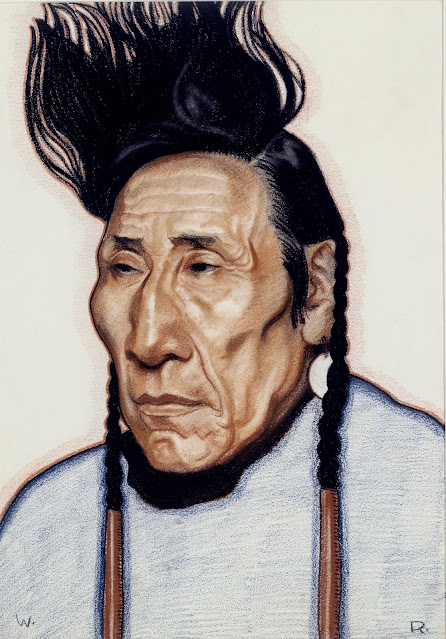The information age is wonderful Wide-ranging forays into the Internet turn up jewels among the offal. Time after time the 'net shows me new and really wonderful artists that I've never known about. The latest was Winold Reiss (1886-1953), a German-born painter and graphic designer. Like many he was successful and well-known while he lived but has faded into obscurity since his death. After reading a bit about his life I spent some time with his images. This is an artist who deserves to be remembered. Luckily, the New York Historical Society is currently exhibiting a wonderful collection of his works.
 |
| Hoff "Winold Reiss, ca. 1930" digital |
Much of Mr. Reiss' graphic work was ephemeral, published in periodicals that have also faded away, and much of his portrait work is in private collections. So far as I can tell, no exhibition or retrospective of his oeuvre has taken place either. I've done a bit of searching online and found a few well-known works and some that show his amazing skills.
Particularly interesting is his sketch of a male model with hands on his hips, gazing to his right. It reminds me strongly of Holbein, perhaps because of the pose but more likely because of the attitude depicted in the sitter's expression.During the second half of the 1920s Mr. Reiss made a number of portraits of Harlem Renaissance, hired by the social welfare journal Survey Graphic. Later on he illustrated an anthology of Harlem Renaissance writings. Perhaps his most famous portrait from those days is Langston Hughes (below), but he made portraits of a number of others, including Zora Neal Hurston.
The New York exhibition of Mr Reiss' works at the New York Historical Society will be on display until October (link below) that would merit a visit but alas I will not be able to attend.
 |
| "Langston Hughes," 1925 |
 |
| "Zora Neil Hurston," 1925 |


No comments:
Post a Comment